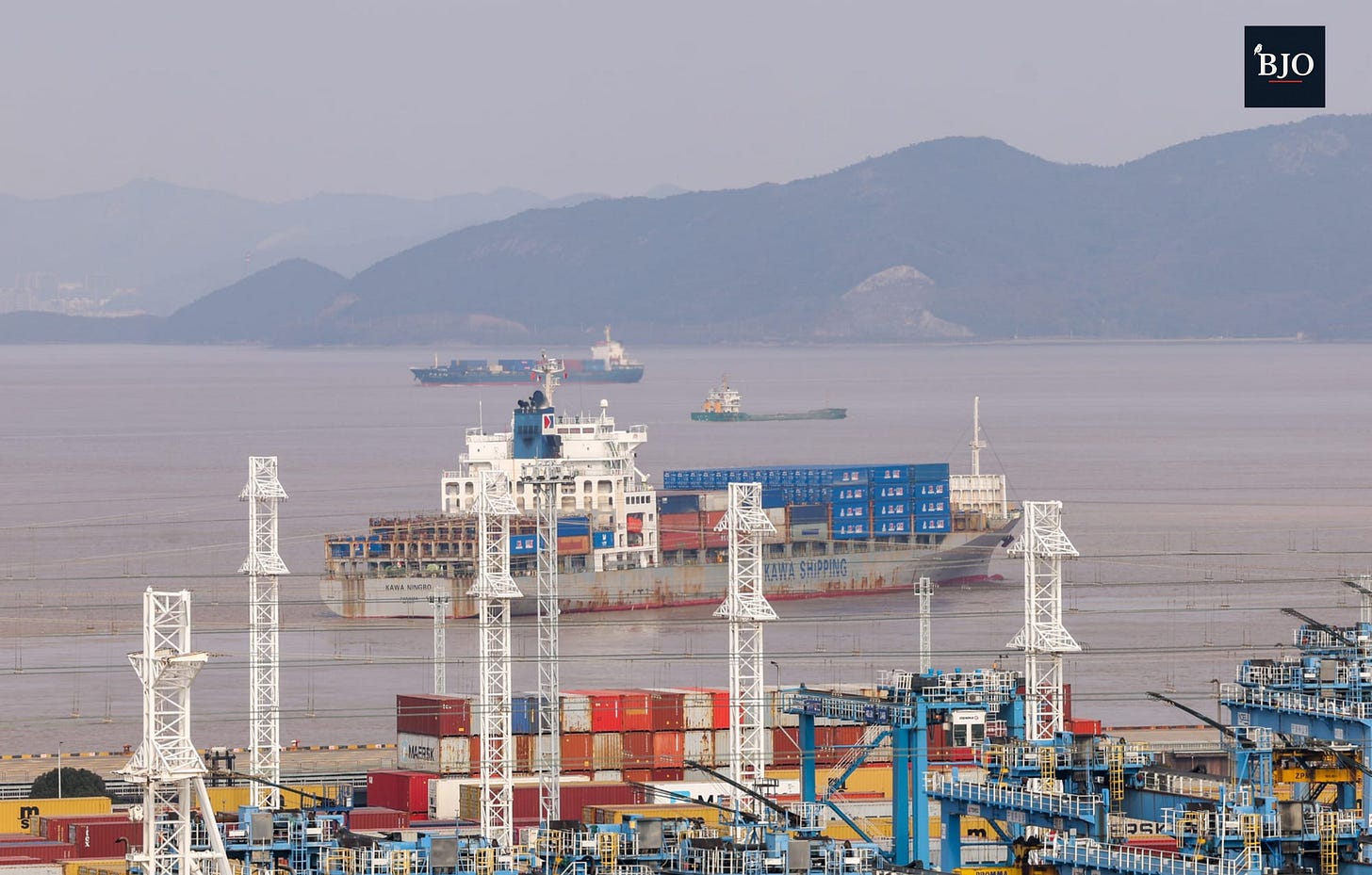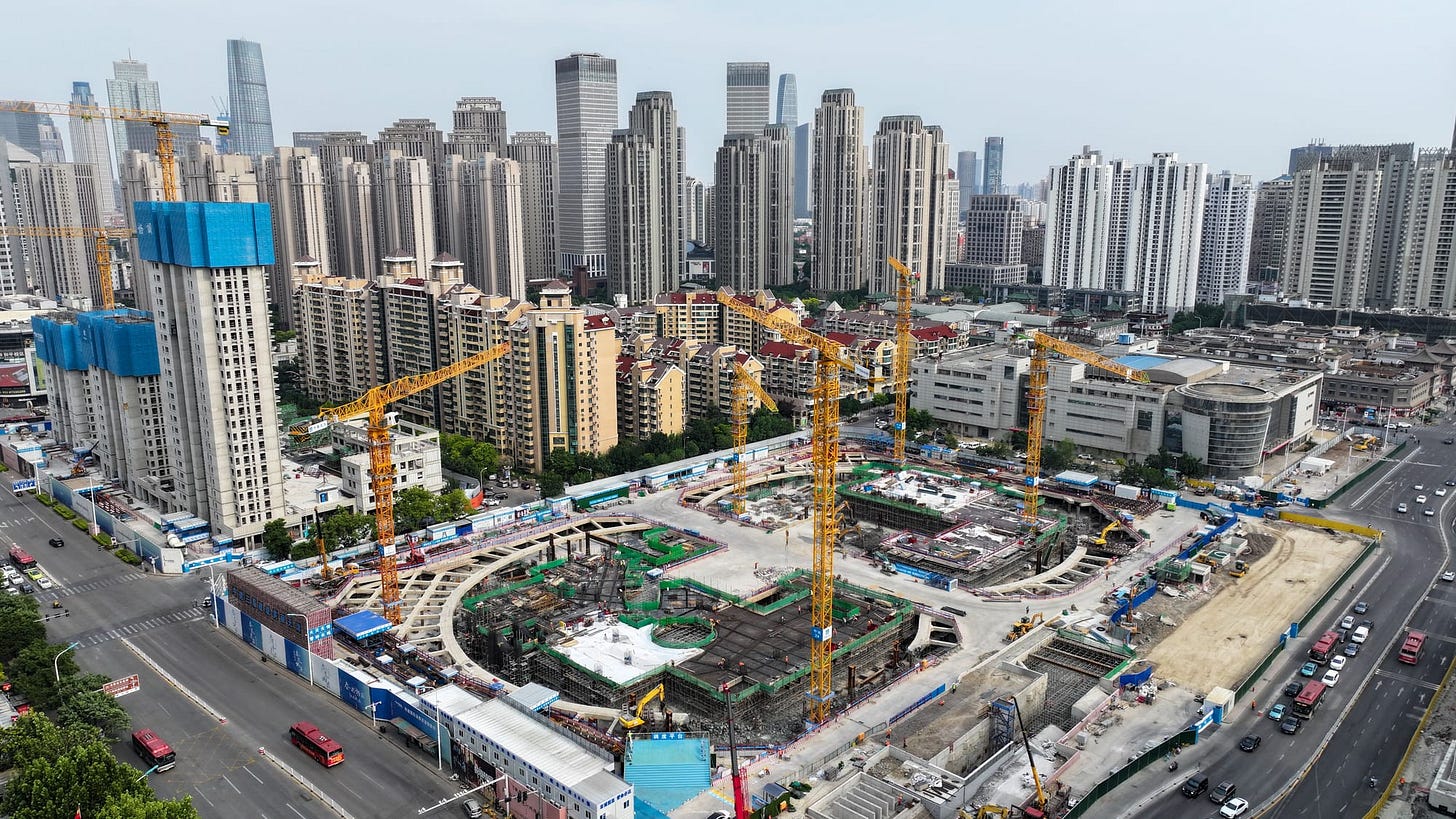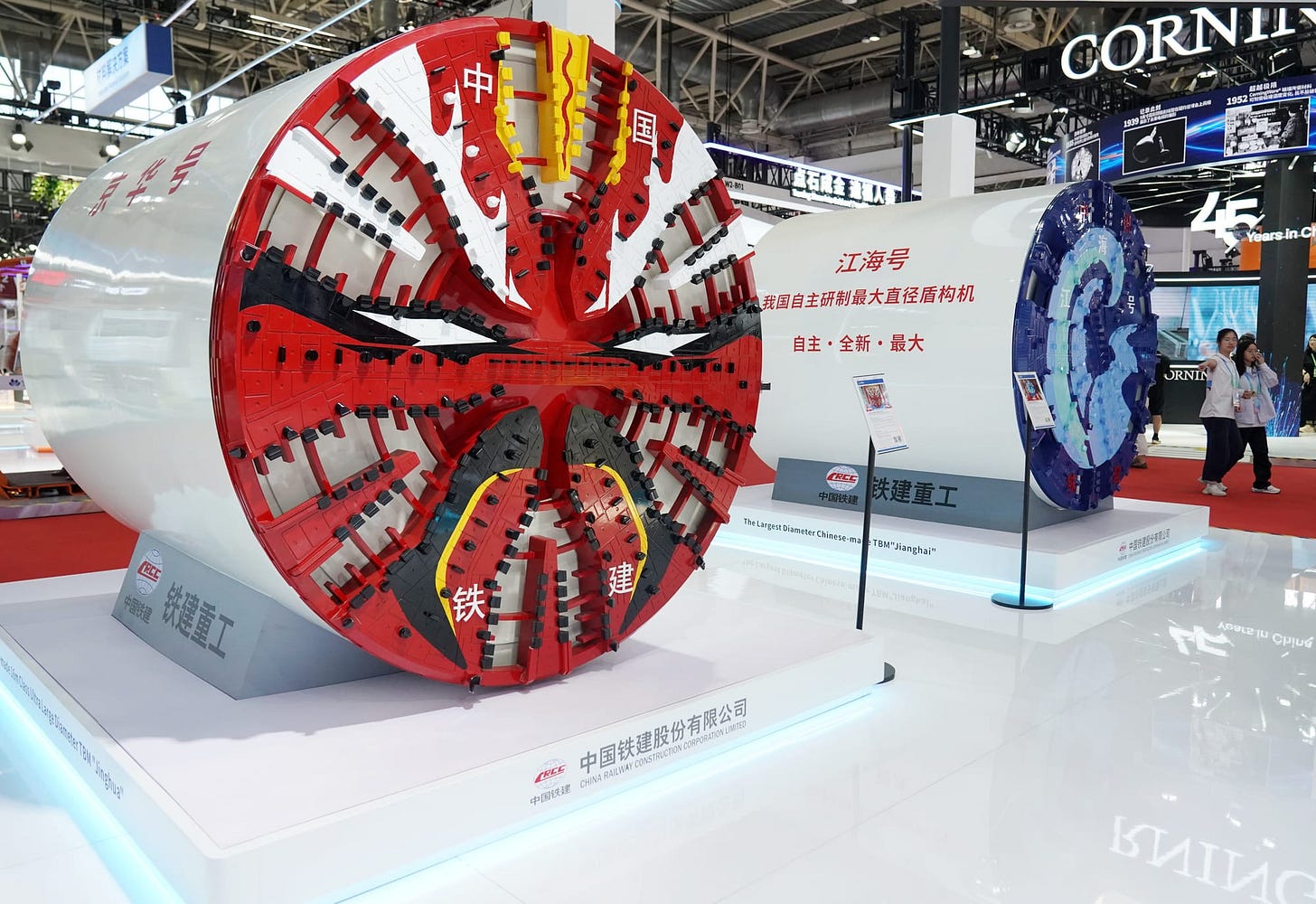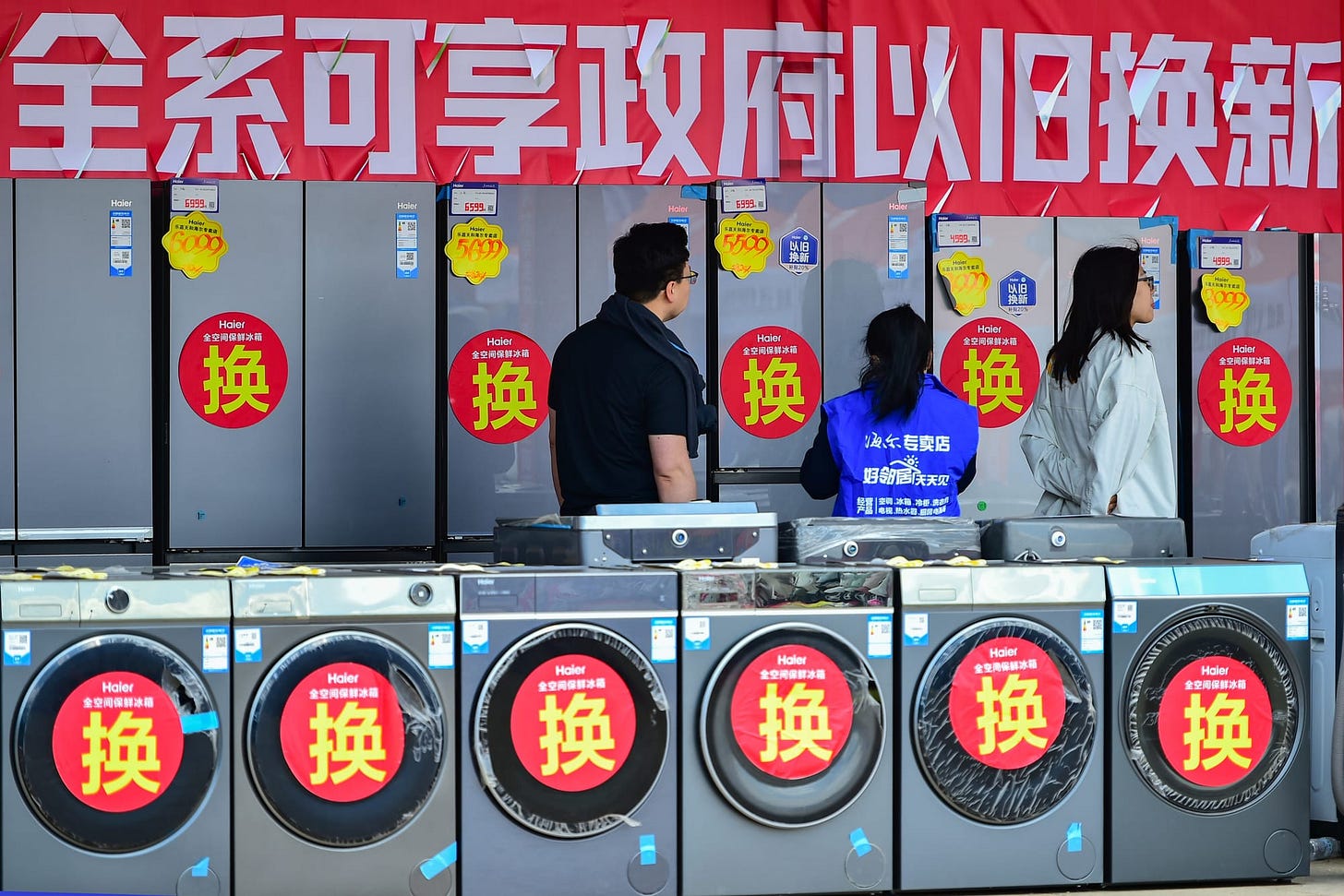China’s GDP Grows 5.3% in H1 Amid Headwinds—How and What’s Next?
HAS CHINA’S FOREIGN TRADE WITHSTOOD TRUMP’S TARIFF SHOCK?

Dear Reader,
China’s GDP grew by 5.3% in the first half of 2025, data recently released by China’s National Bureau of Statistics showed. This performance exceeded many expectations, especially considering the combination of external tariff pressures, sluggish domestic demand, and a continuing real estate crisis.
Seeing this data, you may be wondering:
· How did China achieve such growth?
· How is China handling the tariff shock from Trump’s administration?
· What were the trends in China’s economy in H1 2025?
· What policy measures will the Chinese government take in H2 to ensure its targeted growth rate of “around 5%”?
· What opportunities lie beneath the economic trends in the coming months?
To help answer these questions, we’ve compiled insights from multiple Chinese economic experts based on reports across the Chinese internet. This summary draws from interviews aired on China’s state media CCTV’s “News 1+1” and “Focus Interview” programs, as well as articles from the Chongyang Institute for Financial Studies at Renmin University of China (RDCY).
If you’re an investor or someone interested in China’s macroeconomy, this article may help you get the upper hand.
Happy reading!
Yours faithfully,
Editors of BeijingOpinion.
HAS CHINA’S FOREIGN TRADE WITHSTOOD TRUMP’S TARIFF SHOCK?
Liu Yuanchun, President of Shanghai University of Finance and Economics
China’s foreign trade performed strongly in H1 2025. Contrary to the negative growth forecasted by many international institutions—some even predicting double-digit declines—China’s export data showed sustained positive growth, despite the high tariffs imposed by the U.S. This reflects a sharp rise in China’s competitiveness, which stems not from subsidies but from technological advancement and economies of scale driving down costs.
In H1, China’s total trade volume with the U.S. declined 9.3% year-on-year. Facing unilateralism and protectionism, China expanded its “circle of friends” and diversified its markets. China’s trade with over 190 countries and regions increased, with exports to ASEAN, Central Asia, Africa, and other emerging markets achieving double-digit growth.
Tu Xinquan, Dean of the China Institute for WTO Studies at the University of International Business and Economics:
China’s exports are rising not only to Europe and other developed nations but also to markets in Africa, Latin America, and Asia. The prospects in many developing countries remain promising. Against a rapidly changing external environment, China actively explores these markets and continues to achieve breakthroughs.

Structural shifts within China’s electromechanical exports are also significant. The proportion of labour-intensive processing and assembly products is declining, while capital- and technology-intensive products are increasing. China’s share of ship exports in global markets has surpassed Japan and South Korea, becoming a highlight over the past two years. Industries like semiconductors, robotics, and drones are expanding, suggesting that China’s advantages in electromechanical products will continue to grow.
Wang Wen, Executive Dean of RDCY and Dean of the School of Global Leadership
In H1 2025, China’s total goods trade volume grew by 2.9% year-on-year, with exports rising by 7.2%. From April to June, amid escalating trade tensions, foreign trade data showed a month-on-month rebound. In June, total trade volume rose 5.2% year-on-year, and exports grew 7.2%, confirming China’s irreplaceable role in the global supply chain.
This resilience is rooted in China’s comprehensive industrial system—China has the world’s most complete range of industrial categories, with industrial capacity accounting for about 35% of the global total (possibly higher). This industrial strength enables China to withstand external shocks.
Over the past decade, China has also diversified its global trade strategy. The U.S., once China’s largest trading partner, now occupies a gradually diminishing role in China’s overall trade layout.
Looking ahead, challenges will persist. Drawing on lessons from the past decade, especially during Trump’s first term, China needs to both enhance the competitiveness of its high-tech exports and deepen international industrial and supply chain cooperation. This is essential to navigate growing uncertainties and safeguard China’s long-term position in global trade.
ARE CHINA’S CONSUMPTION PROMOTION POLICIES EFFECTIVE?
Cai Tongjuan, Director of Macroeconomic Research at RDCY:
In H1, China’s total retail sales of consumer goods grew 4.8%, slightly below expectations. However, structurally, basic living goods maintained stable growth, while service consumption remained active, reflecting a shift from goods to experience-based consumption. Sectors such as cultural tourism and healthcare showed sustained demand growth. Tourism during the May Day and Dragon Boat Festival holidays hit record highs, boosting services. Auto and appliance sales saw periodic rebounds due to policy incentives, while green and smart consumption trends stood out.
Wang Guanhua, Spokesperson for the National Bureau of Statistics (NBS)
The consumer market’s vitality increased in H1. Retail sales of consumer goods grew by 5.0%, accelerating by 1.5 percentage points compared to 2024. Consumption contributed nearly 70% to economic growth, indicating that China’s growth increasingly relies on domestic demand—especially consumption—which aligns with economic restructuring goals and helps enhance China’s economic resilience.
At the same time, the “old-for-new” trade-in policy (Editor’s note: in China, the policy of “以旧换新” — literally “trade-in for new” — allows consumers to purchase new appliances or digital devices by trading in their old ones for discounts. This has become one of the key measures to stimulate consumption, promote consumption upgrades, and industrial transformation. This encouraged consumers to replace old appliances with high-efficiency, smart products. Green, intelligent consumption trends are pressuring enterprises to invest more in R&D, driving supply-side improvement to meet evolving demand.
Liu Yuanchun, President of Shanghai University of Finance and Economics
Currently, services account for about 44% of total consumption in China. In comparison, this figure is over 70% in the U.S. and around 60% in comparable countries. To close this gap, China must focus on both supply and demand, particularly in expanding entertainment and cultural consumption, which address consumers’ emotional and experiential needs.
WHAT ROLE ARE THE PRIVATE SECTORS PLAYING?
Lu Donghong, Associate Researcher at RDCY’s Macro Research Division
Private enterprises play a strengthening role in China’s foreign trade. In H1 2025, there were 628,000 active foreign trade firms, an increase of 43,000 year-on-year, with private enterprises accounting for 547,000, nearly 90% of the total. These firms contributed nearly 60% of the total import and export value, with a growth rate of 7.3%, significantly higher than the national average. Leveraging flexibility and sharp market acumen, private firms have deeply integrated into global value chains, becoming the most dynamic growth engine of China’s trade.
High-tech product exports by private firms rose 12.5% year-on-year, reflecting their innovation breakthroughs translating into export competitiveness. Equipment manufacturing dominated, with
products like ships, automobiles, and specialized equipment achieving double-digit growth, marking a shift from “scale expansion” to “quality improvement” among private manufacturers. In China’s top 500 import and export firms, private firms now occupy 218 seats, nearly 40%, breaking traditional dominance by state-owned giants and injecting strong momentum into industrial modernization.
Wang Guanhua, NBS Spokesperson:
Behind the push for high-end, intelligent manufacturing is the presence of countless private firms. This year’s surge in domestic AI large models, humanoid robots, and related fields shows that private firms are playing crucial roles in driving innovation.
Private firms are active in the AI sector. The rise and application of large models significantly boosted demand for computing power, with server production doubling (up 1.3 times) in H1 2025. These developments indicate that AI, driven by technological innovation and commercial application, is entering a rapid development phase. Capturing this historic opportunity will be key to optimizing industries and enhancing overall productivity.
(Editors’ Note: On May 20, China’s first foundational law dedicated to private economic development—the Private Economy Promotion Law—officially came into effect.)
Tian Xuan, Dean of the National Institute of Financial Research at Tsinghua University:
From proposal to final passage, the Private Economy Promotion Law took less than 18 months, marking a milestone in China’s support for private enterprises. The law enshrines the “Two Unswervingly” principle—“unswervingly consolidate and develop the public sector of the economy, and unswervingly encourage, support, and guide the development of the non-public sector.” By formalizing this principle, the law boosts entrepreneurs' confidence, encouraging them to focus on their businesses, invest for the long term, and pursue technological innovation.

Private enterprises contribute at least 50% of tax revenue, 60% of GDP, 70% of technological innovation, 80% of employment, and 90% of total enterprises in China. Promoting private enterprises is thus vital to technological innovation, developing new productive forces, consumption growth, and job creation. In H2 2025, the focus will be on fully implementing the law’s spirit, solving real challenges faced by private firms, and helping the sector thrive, ensuring China meets its annual economic growth target.
WHAT ECONOMIC TRENDS SHOULD BE WATCHED IN H2 2025?
Liu Yuanchun, President of Shanghai University of Finance and Economics
In the short term, preventing risks in the real estate sector is critical. The key issue lies on the supply side—property developers must avoid widespread bankruptcies, and their liquidity needs safeguarded. On the demand side, sustaining residents’ mortgage repayment ability is vital. Ensuring a well-functioning financial and supply chain loop for real estate is essential.
While many foreign analysts predict that China’s property market won’t bottom out until 2027, new urbanization and urban renewal initiatives may accelerate the adjustment cycle beyond conventional models. Stronger policy guidance and more proactive messaging may be necessary to counter overly pessimistic narratives.
Lu Donghong, RDCY:
We must also remain sober about persistent external risks: global economic slowdown and trade protectionism continue to threaten China’s foreign trade. Insufficient domestic demand also limits private sector expansion. To consolidate the recovery, the government should strengthen policy support, optimize the business environment, reduce private sector burdens, encourage R&D investment, boost independent innovation, and cultivate more globally competitive brands.
Liu Ying, RDCY:
In H2 2025, with multiple expected Fed rate cuts and persistent U.S. tariff pressures, expanding domestic demand and maintaining low inflation give the People’s Bank of China ample room for RMB reserve requirement ratio (RRR) cuts and interest rate reductions. This creates a favorable monetary and financial environment to support real economy recovery and growth.

















